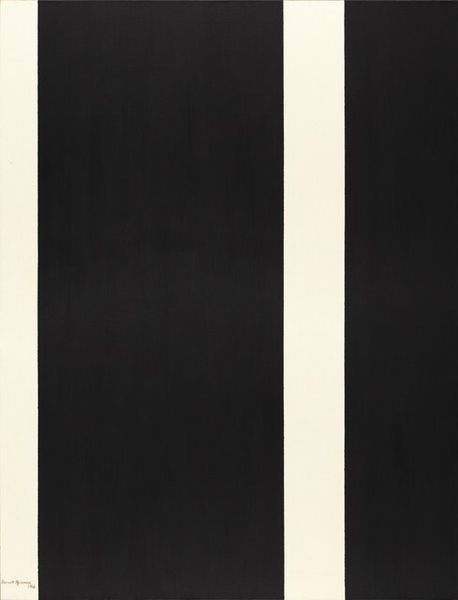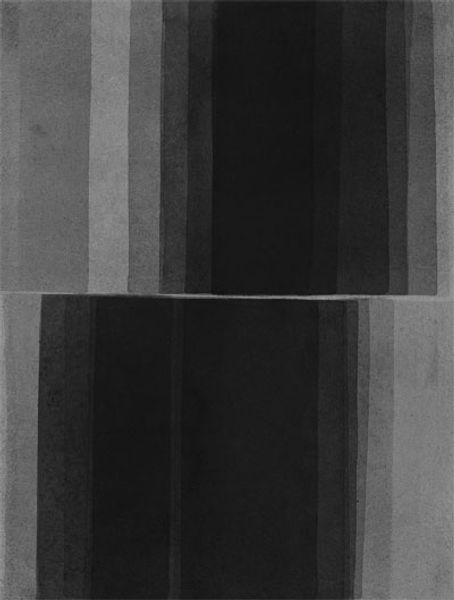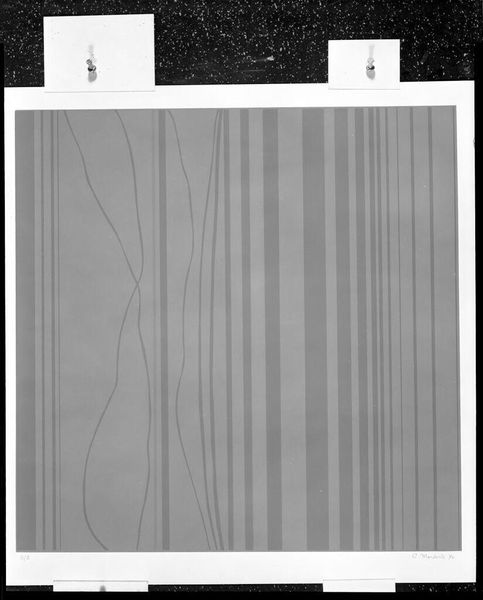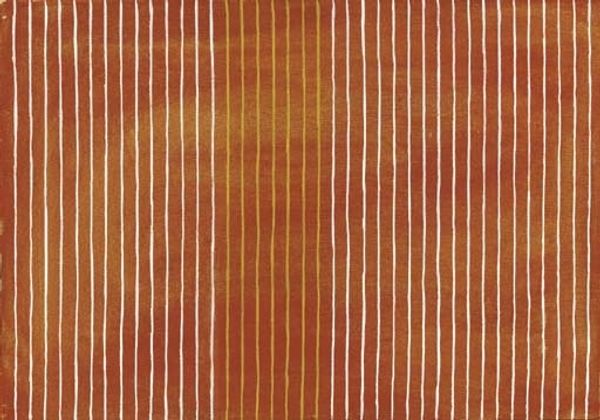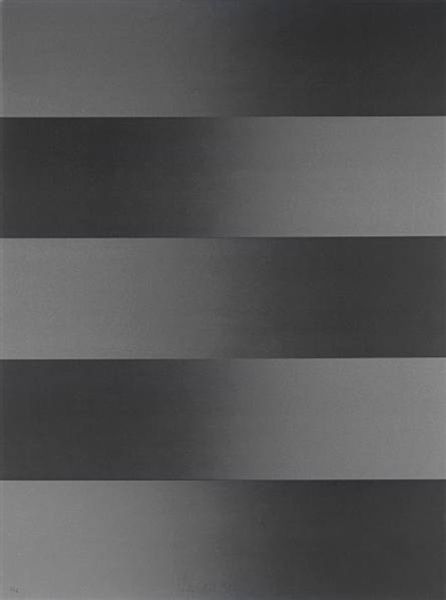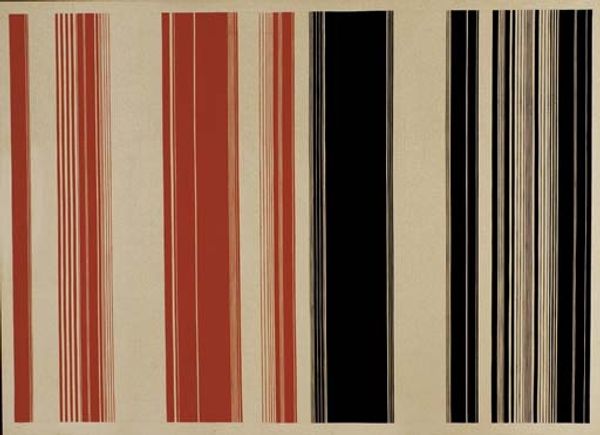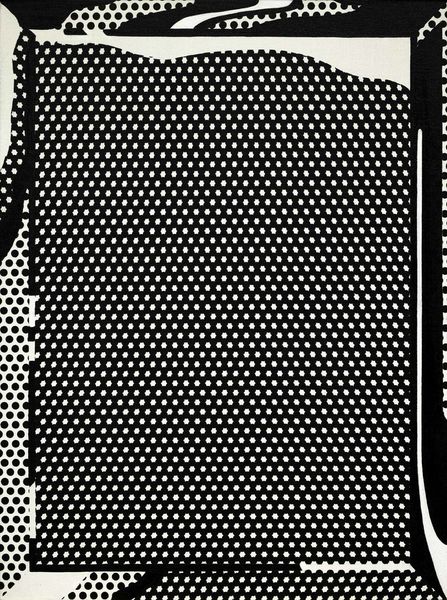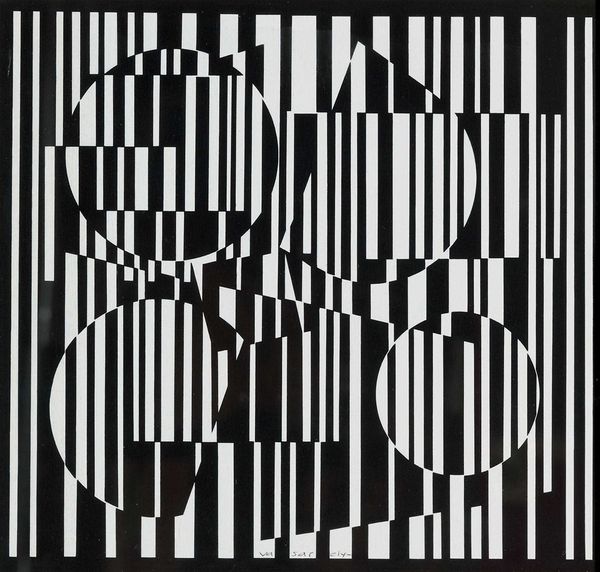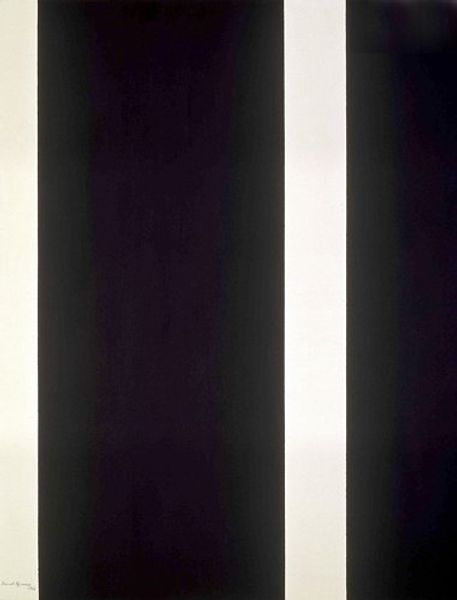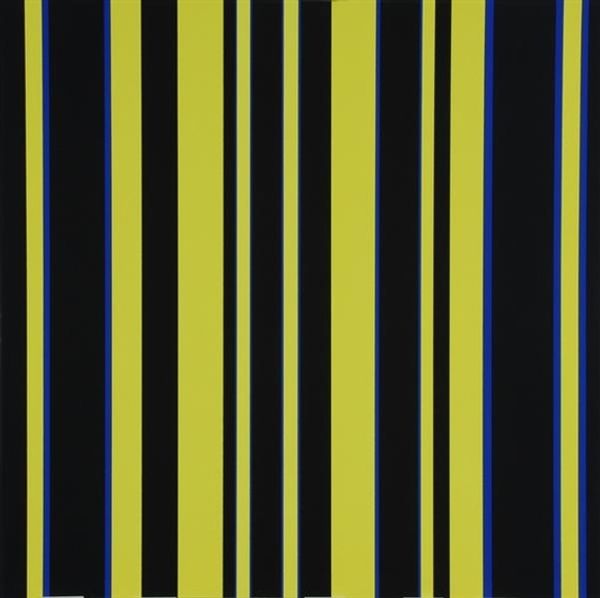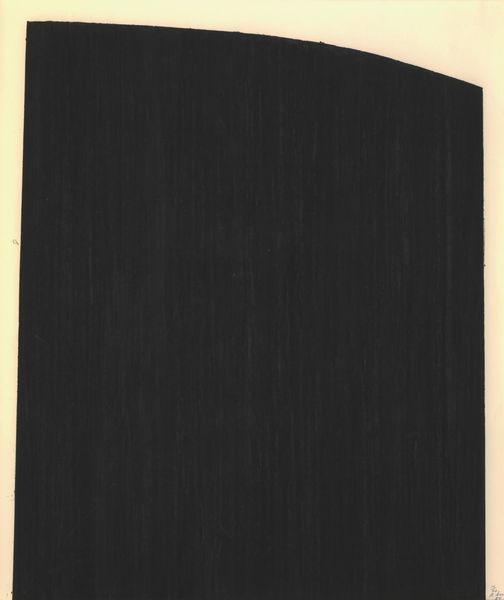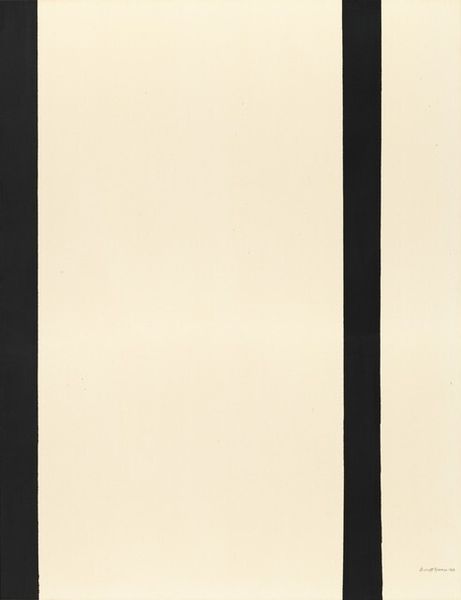
painting, acrylic-paint
#
painting
#
acrylic-paint
#
geometric pattern
#
geometric
#
geometric-abstraction
#
line
#
modernism
#
hard-edge-painting
Dimensions: overall (two joined panels): 289.56 x 1097.28 cm (114 x 432 in.) left panel: 289.56 x 464.82 x 4.45 cm (114 x 183 x 1 3/4 in.) right panel: 289.56 x 632.46 x 4.45 cm (114 x 249 x 1 3/4 in.)
Copyright: National Gallery of Art: CC0 1.0
Curator: Alright, let's delve into Gene Davis's "Satan's Flag," created in 1970 using acrylic paint. The painting showcases his signature style of vertical stripes, part of the hard-edge painting movement. Editor: Immediately, it feels… imposing. Almost like a barcode, but less welcoming, more…stark? The black and muted white stripes create a visually arresting rhythm, but also a sense of unease. I get that's probably the point considering its title! Curator: Precisely. Davis, while known for vibrant color, often explored monochrome or near-monochrome palettes. I always found him a rather rebellious and whimsical character in his own life and how he played with form. I love the starkness here and that contrast in palettes is interesting. In the sociopolitical landscape of 1970, the name "Satan's Flag" feels pointed, even confrontational, you know? It plays with that feeling in an almost subversive way. Editor: Absolutely, especially during a time marked by counter-cultural movements and challenges to established power structures. A title like this positioned it within a very specific ideological and aesthetic conversation, daring to be deliberately jarring. It reminds me of Ad Reinhardt, but without the suffocating weightiness. Curator: I love that comparison, particularly its political statement during the Vietnam War. The very conscious artistic exploration is very telling, right? I can just picture Davis with a smirk, stirring the pot! Editor: Without question, and while it is certainly engaging, what is interesting for me is to consider that there could even be intersectional approaches to considering class dynamics, given who art and social structures aim to marginalize with political art or art with some message or meaning. What is really so bad about art or a "flag" that promotes the ideas that were given that name? Why is that "Satanic?" Curator: Yes. That is the subversive idea behind it all, isn't it? To question just that. Editor: The dialogue, or in this case perhaps discordance, it creates is what makes it so powerful. Curator: Looking at "Satan's Flag", its unsettling visual cadence with its sharp angles certainly gives a little bite for reflection. It's hard-edge with a wink, right? Editor: Exactly! A testament to the power of art to provoke and question.
Comments
No comments
Be the first to comment and join the conversation on the ultimate creative platform.
